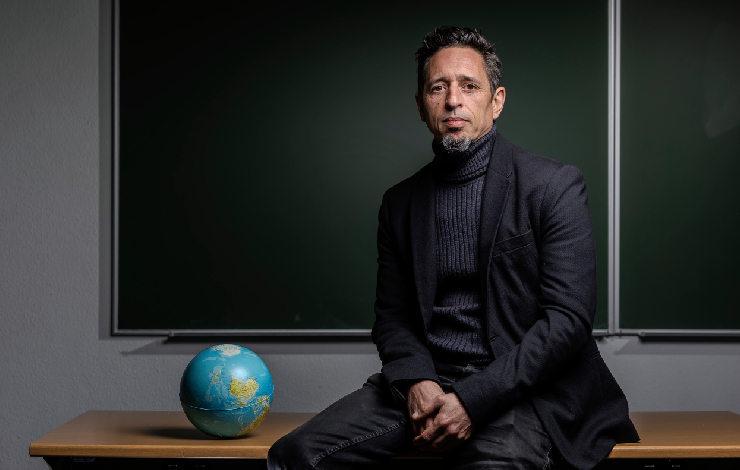30-06-2025

Photo: João Lima/NOVA FCT
A research team from NOVA FCT and the Dom Luiz Institute at the Faculty of Sciences, University of Lisbon, has demonstrated that the magmatism that occurred in Portugal at the end of the Cretaceous originated from a mantle plume. This plume was responsible for the later formation of the volcanic islands of Madeira and the Canary Islands. The study, published in the journal Geology, was coordinated by researcher Ricardo Pereira (NOVA FCT), in collaboration with João Duarte and João Mata (Dom Luiz Institute), and is based on the Master’s thesis of Bruno Araújo.
Mantle plumes are stationary structures, while tectonic plates move over them. The study suggests that this plume, located at the boundary between the lower and upper mantle at around 660 kilometers deep, has been episodically releasing smaller secondary plumes over the past 100 million years. These volcanic eruptions gave rise to rocks found in mainland Portugal, its submerged platform, as well as in Morocco, Madeira, and the Canary Islands.
This phenomenon occurred at the end of the Cretaceous, around 70 to 100 million years ago. Today, evidence of this activity can be seen in rock formations in the Lisbon, Sintra, and Mafra regions, as well as further south in Sines and Monchique. However, due to tectonic plate movement, this magmatism is now inactive in mainland Portugal.
The results of this research challenge the traditional view that hotspot-type magmatism (such as that in Hawaii) requires a single, rising plume from deep in the mantle. Instead, the study suggests that large, stationary superplumes at the mantle boundary can intermittently release smaller plumes over millions of years, creating complex surface patterns of magmatism and volcanism. This model helps explain the distribution of magmatic activity along the margins of Portugal and Morocco, as well as the formation of submarine mountain chains extending northward from the Canary Islands and Madeira.
Beyond contributing to a better understanding of the processes driving large magmatic provinces, this research may have implications for other regions of the world, such as the Cape Verde archipelago. The results are part of a broader set of investigations, including the potential use of extinct volcanoes for CO₂ storage—an innovative strategy to mitigate greenhouse gas emissions.
Read the full article in Geology: https://doi.org/10.1130/G52930.1
Press
Estudo revela como o magmatismo em Portugal influenciou a formação da Madeira e das Canárias, JM-Madeira